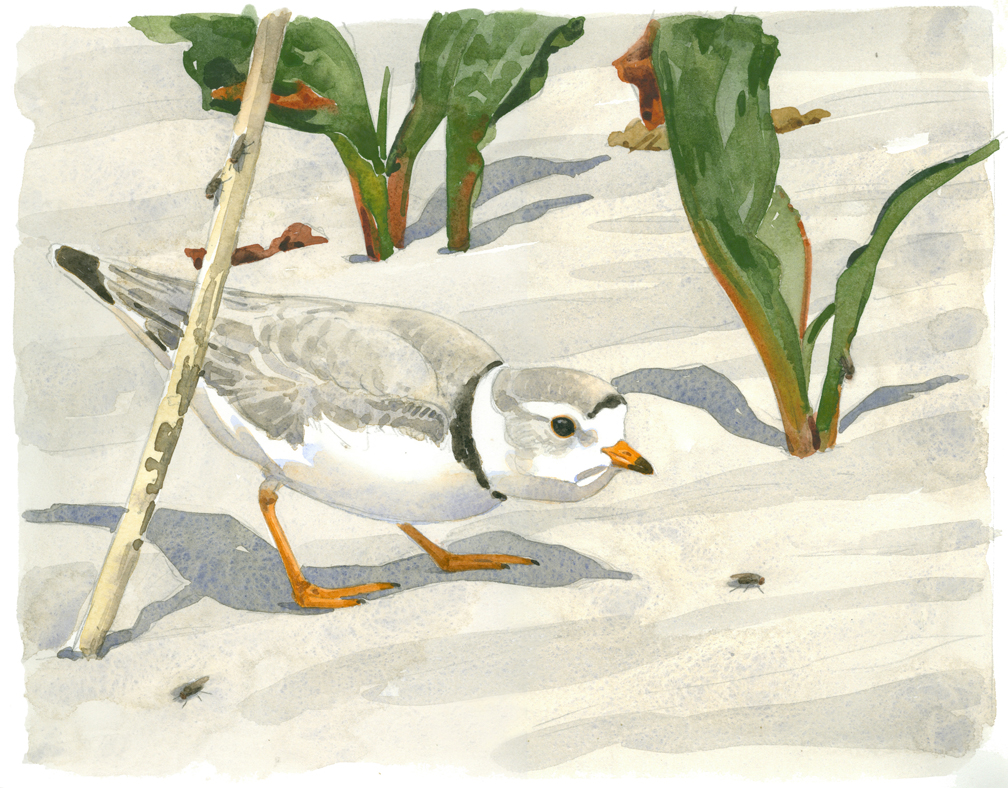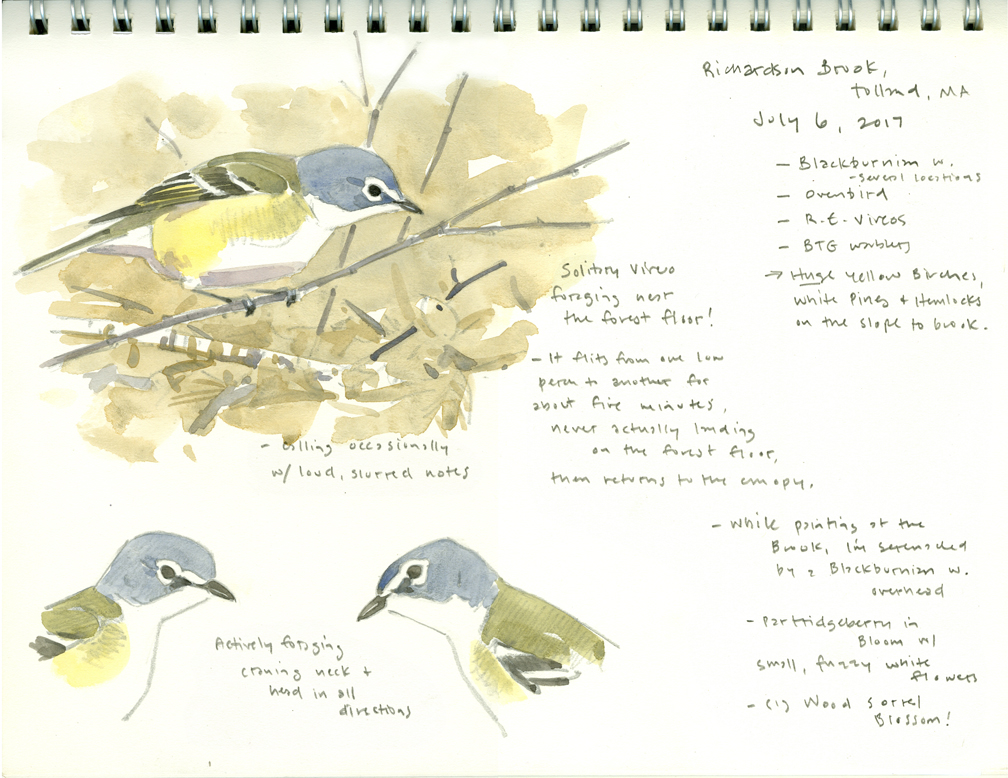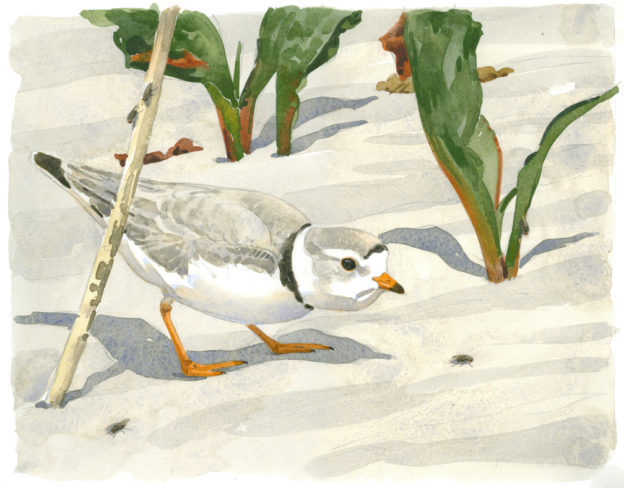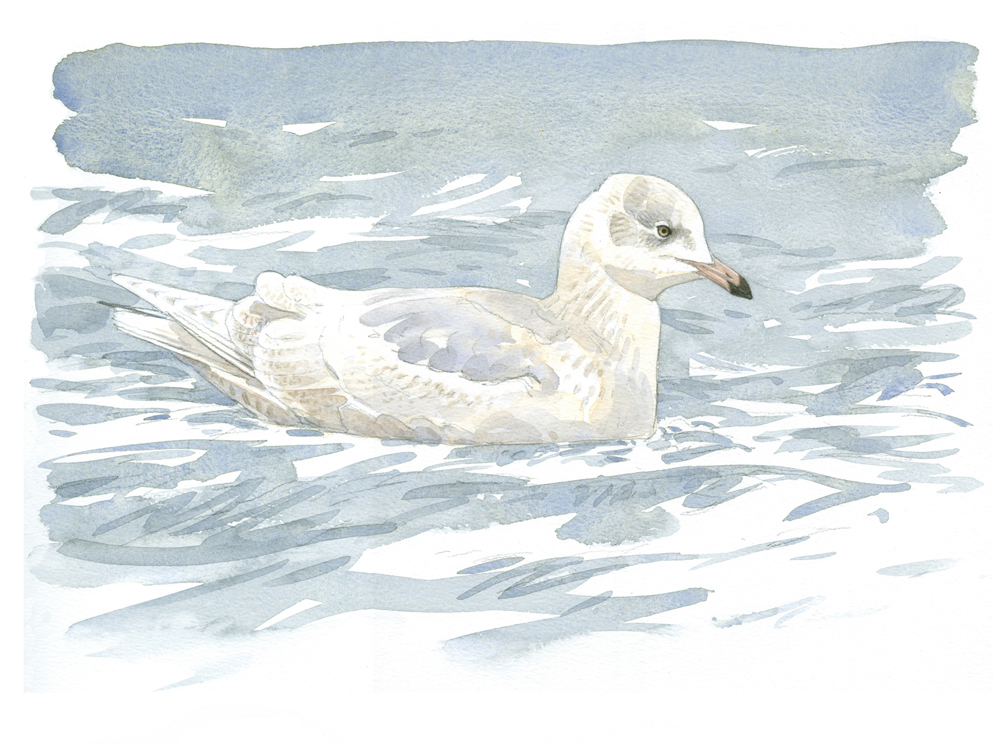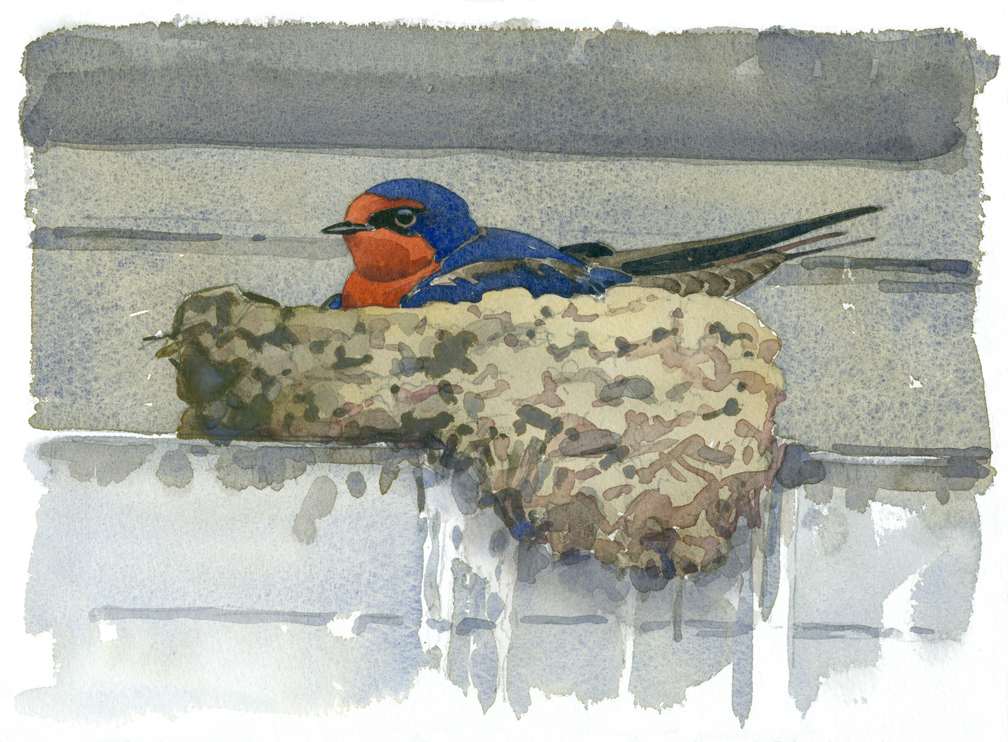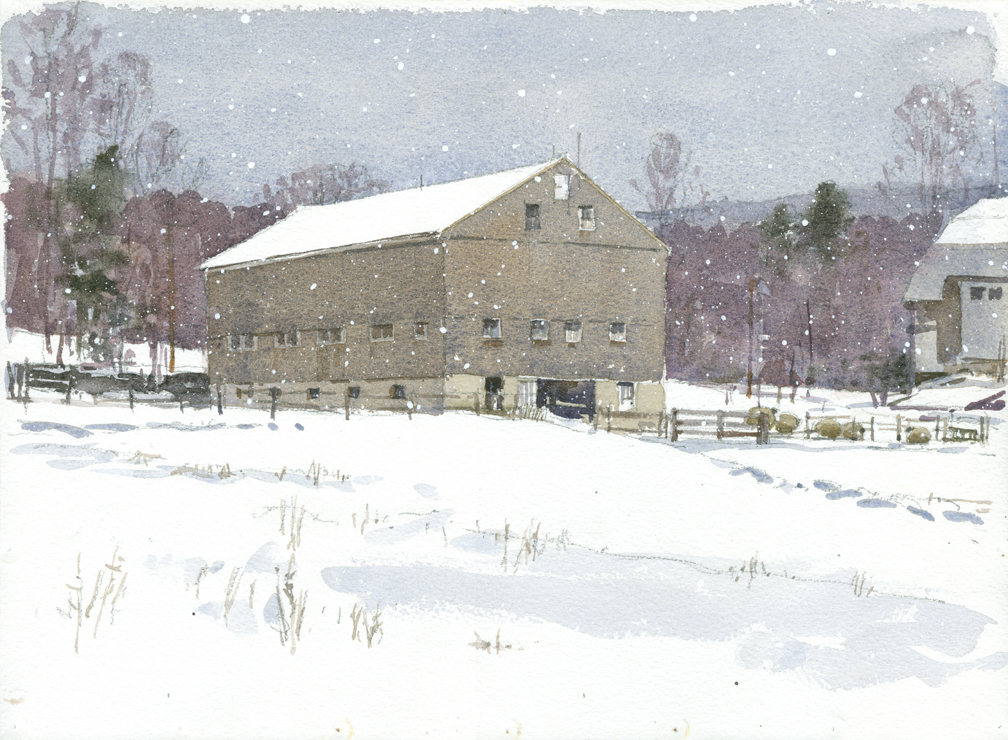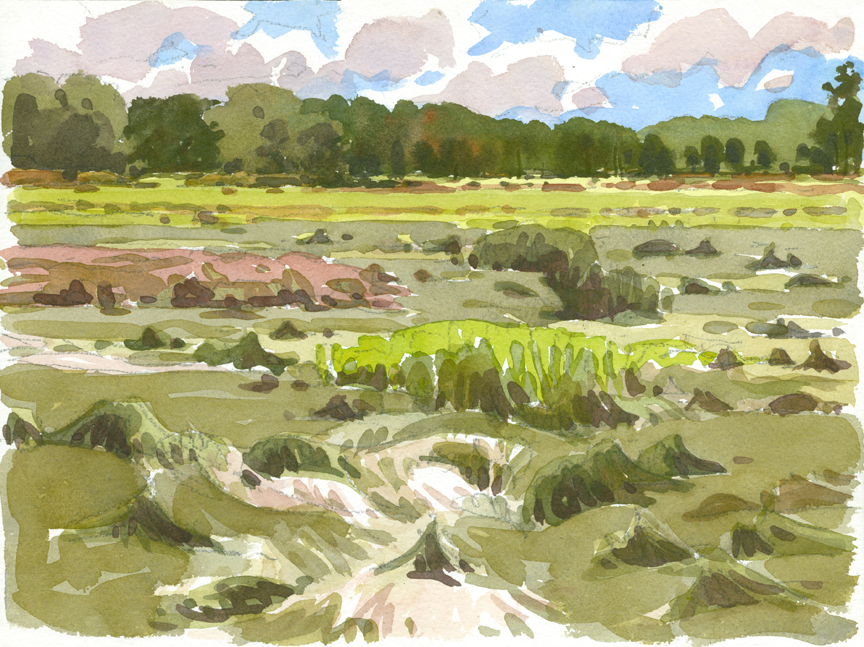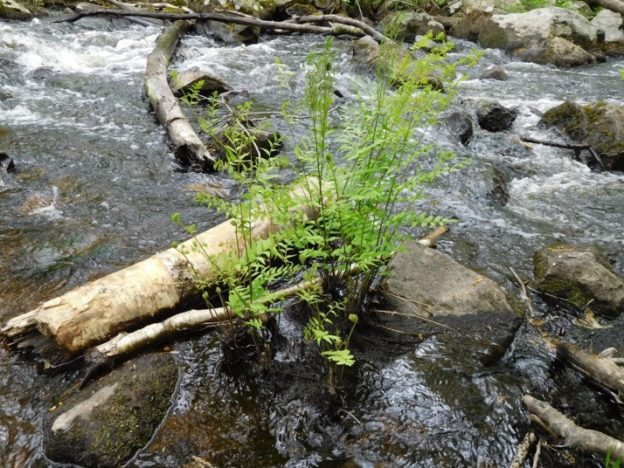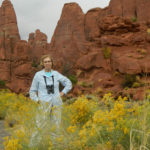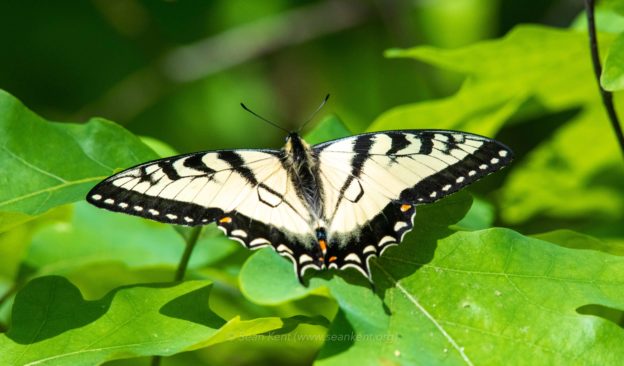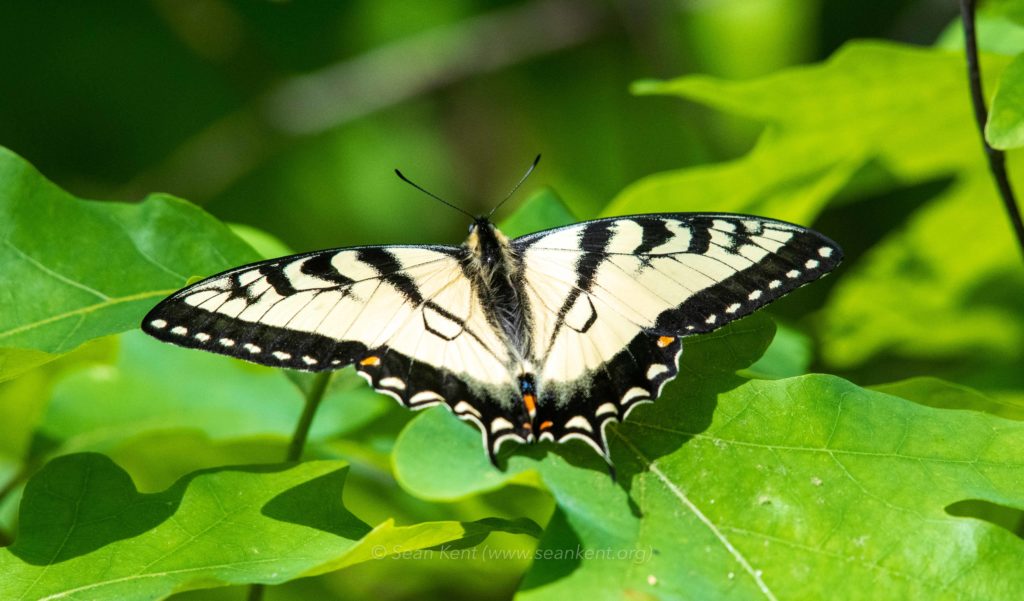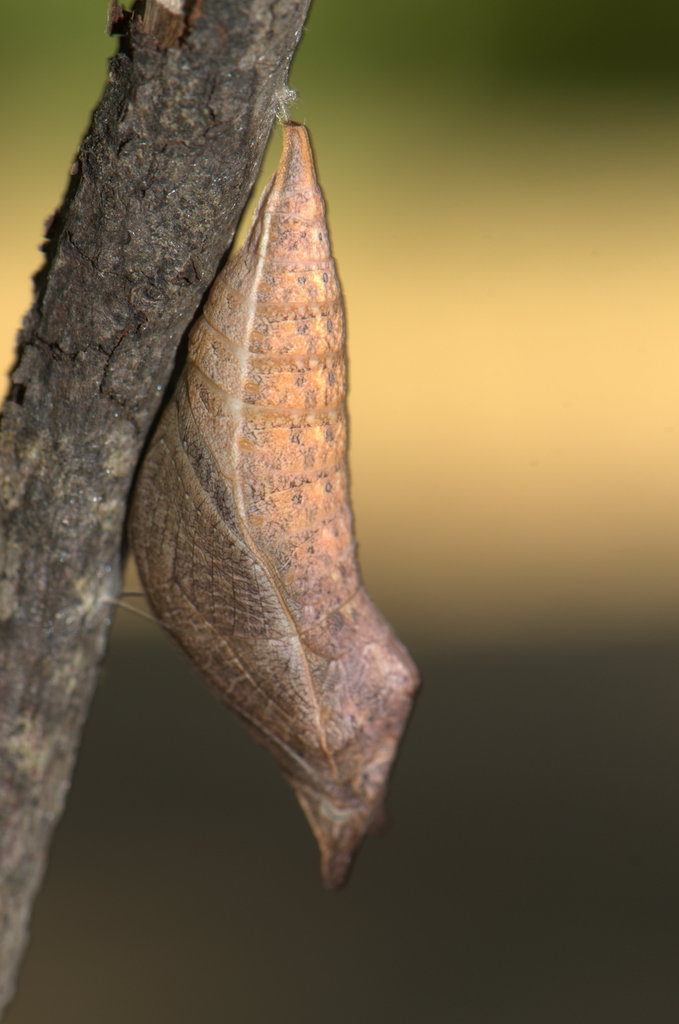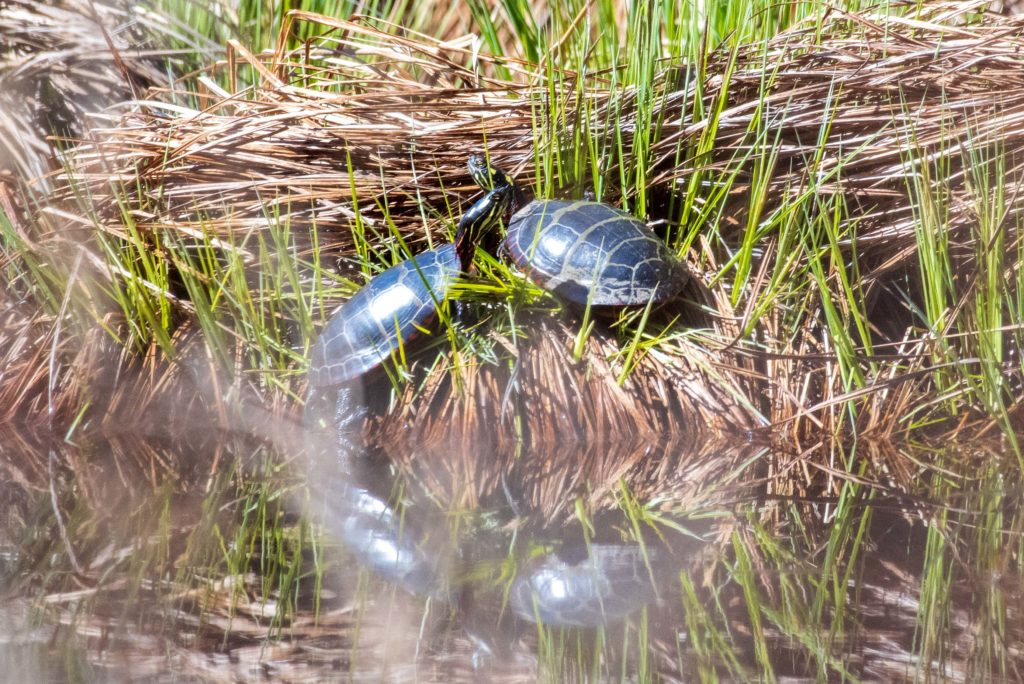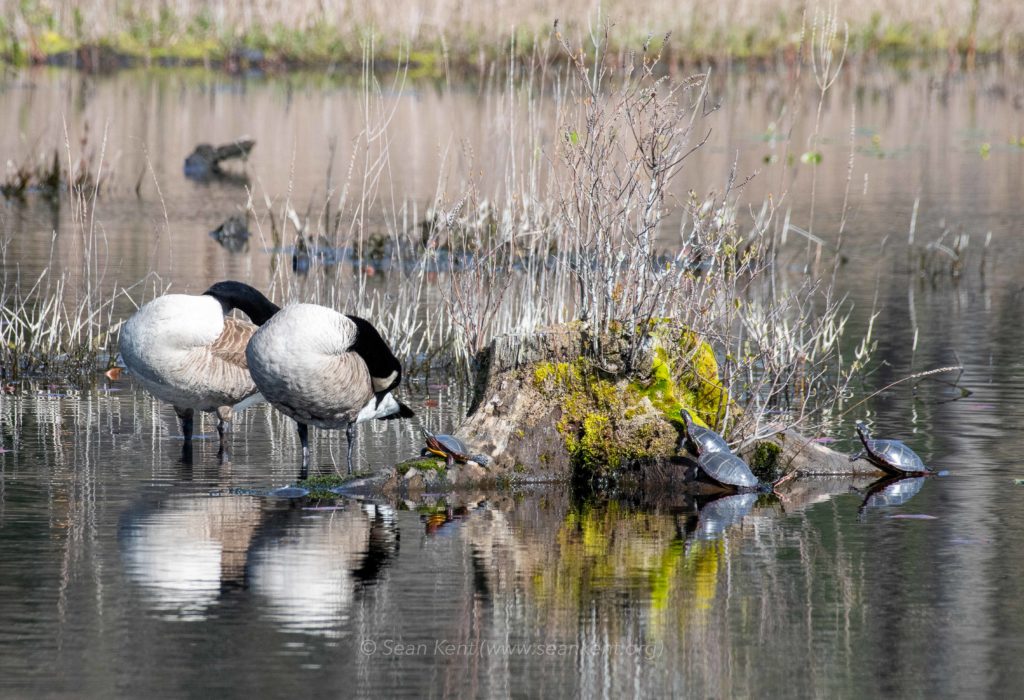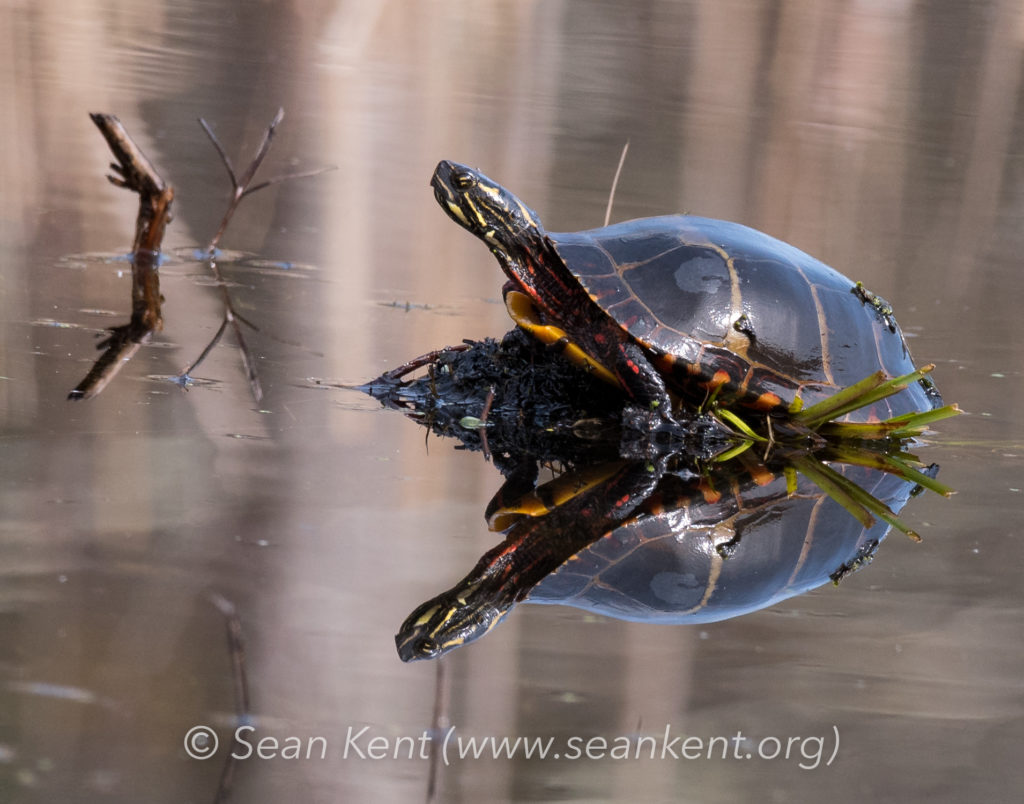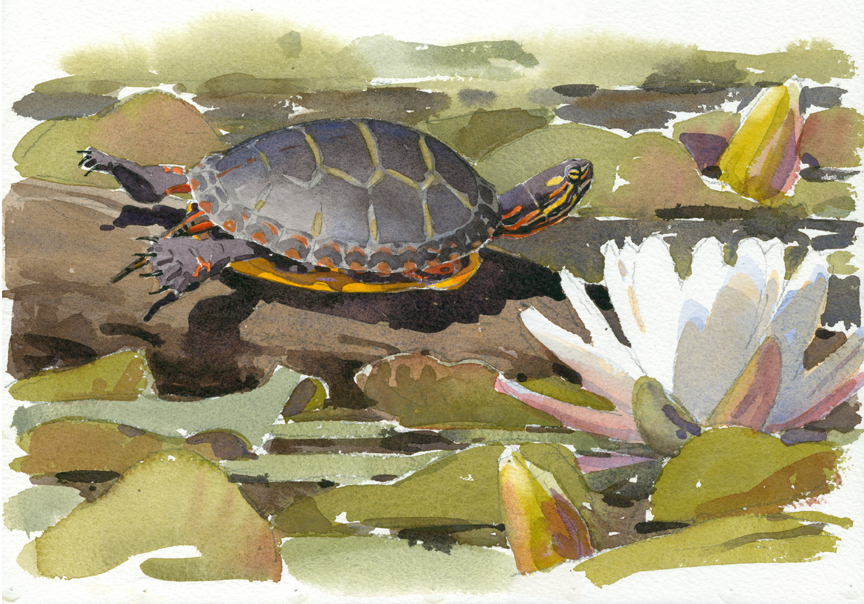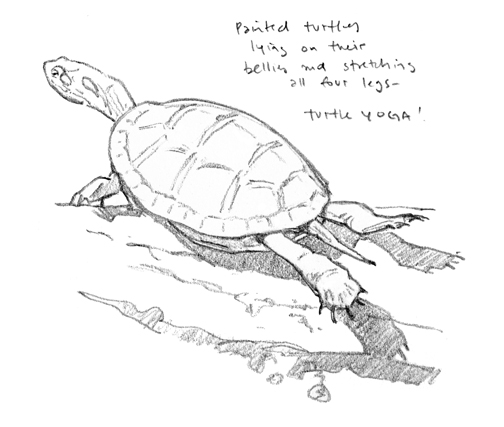This post is by Deborah Stone, a good friend of MABA.
Just as I came down a trail to the edge of Beebe Pond, a Great Blue Heron landed about 20 feet ahead of me. It froze in classic heron statue pose—until I spooked it by lifting my binoculars. Then it alighted for safer territory. Perfect timing. Whenever I see a heron, I can’t resist stopping to watch it catch dinner, and I was beyond ready for a break and lunch. I leaned my butt on a rock with an indent that felt custom made and found the heron farther out in the pond
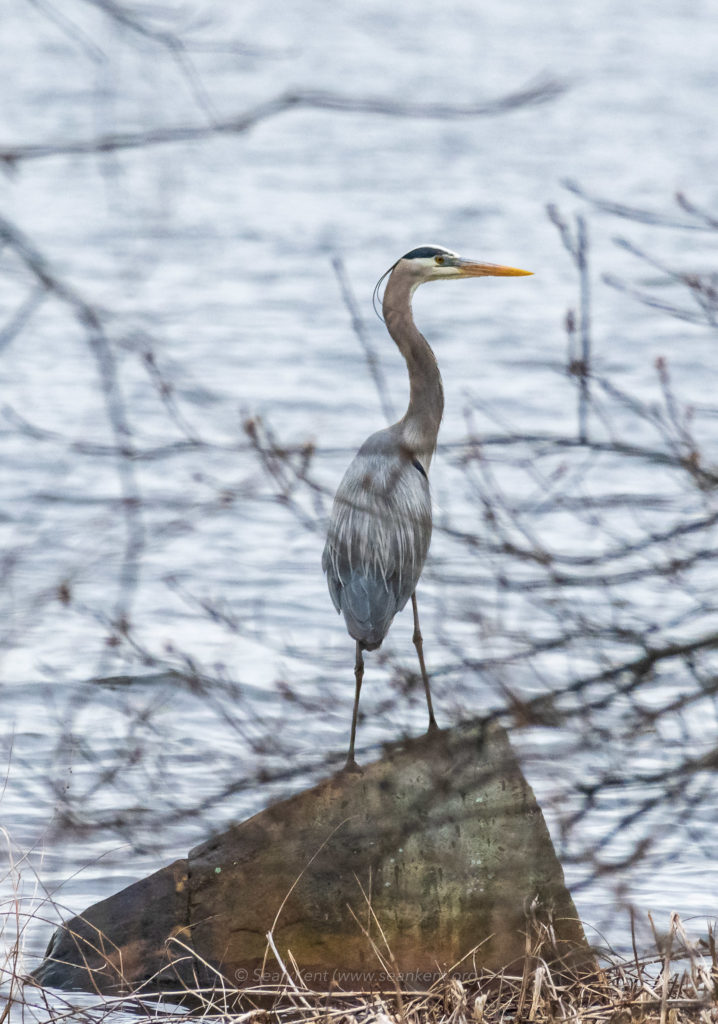
Holding half a PB&J in my right hand and binocs in my left, I watched the heron stalk— slowly, deliberately, intently. I didn’t have its patience and took a large bite of my sandwich. It felt rude to eat before everyone had their dinner, so I willed my chewing to reach the heron as a kind of telepathic aid to success. Karma didn’t take long to work. The heron thrust its head down and came up with a large fish. Quite the morsel but how to get it down the gullet? The fish was crosswise in the heron’s beak, flapping its tail wildly, trying to escape.

Five times the heron lowered its head behind some grasses, presumably to maneuver the fish into a better position. After the second, third and fourth time, when the heron lifted its head again, the fish was still crosswise, but after the fourth time, I could see that it was lifeless. After the fifth time, the beak came up with the fish still crosswise. The heron gave a little head toss and Bingo! Straight on, down the hatch. I thought I saw a bulge in the heron’s neck, something like the snake that swallowed a mouse in Le Petit Prince. I estimated it took a full minute from the time of capture to the time dinner was ready.
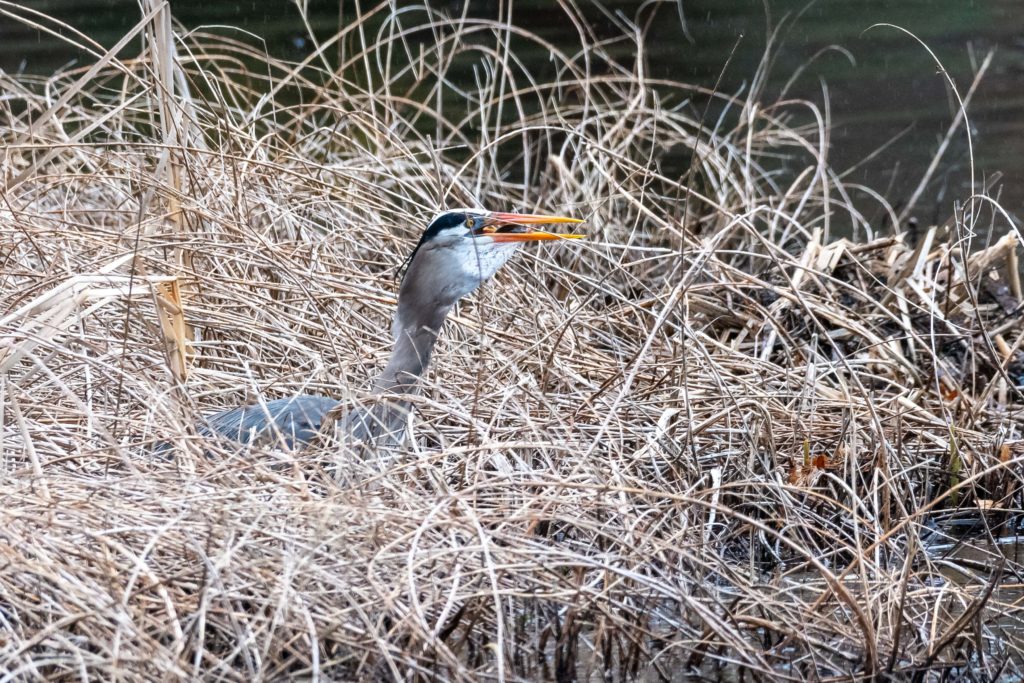
I couldn’t see what culinary tricks the heron performed while it had its head down, but I can guess. At Hall’s Pond Sanctuary in Brookline, I once saw a heron make a catch far too large to fit down its throat. It flew to the pond’s edge and dropped the fish on the ground. There, it pecked at the fish to subdue it, then picked it up and carried it to another spot where there was a large flat rock. I watched the heron stab away at the fish, ripping a bite here and there. Eventually, the remaining piece of fish was down to a manageable size.
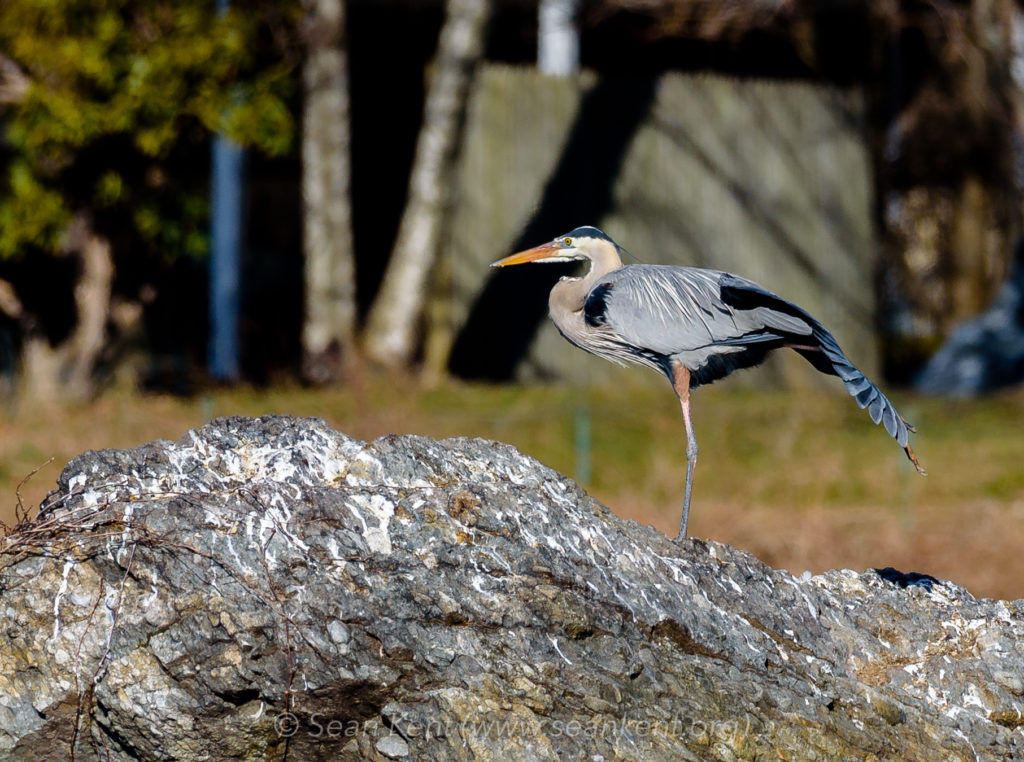
Here at Beebe Pond, the water was shallow. I couldn’t see whether there was a hummock or a rock to serve as a butcher block, but I’m guessing the heron found a way to disable the fish without letting it loose in the water. Perhaps the heron held part of the fish on the pond bottom with one foot while using its beak as a pincers. I could try to find answers in a book or on YouTube, but I prefer trying to solve nature’s mysteries with wonder instead of science.


I was only part way through my half sandwich when the heron caught its next fish. This one was somewhat smaller. This time, too, the heron had caught the fish crosswise in its beak. This time, though, the heron flipped the fish parallel to its beak and swallowed, all in about three seconds. Dessert always goes down easier, doesn’t it?
Note: Photos were not taken during these observations, but are illustrative of the events.





